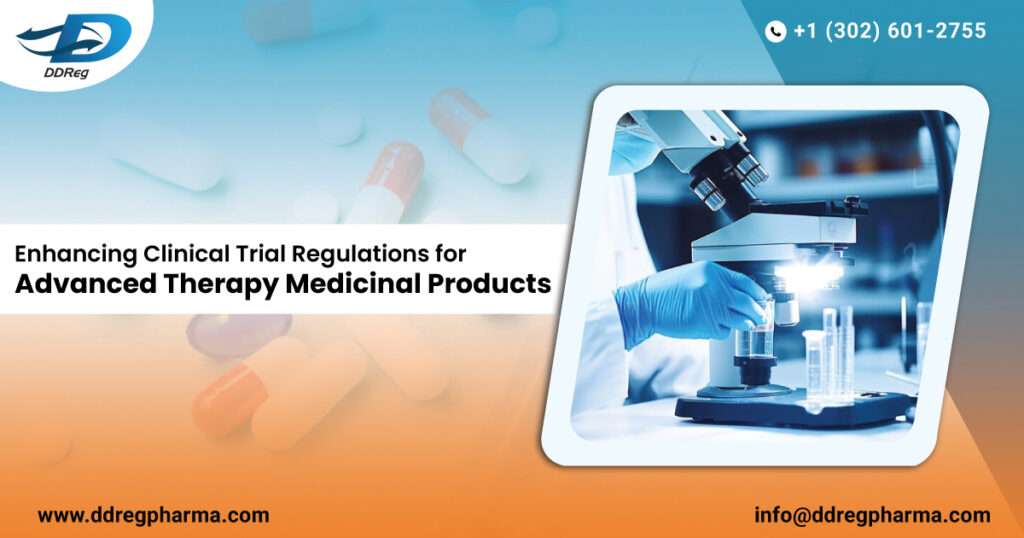Advanced therapy medicinal products (ATMPs) including gene therapy medicinal products, somatic cell therapy medicinal products and tissue-engineered products, are at the cutting edge of innovation and offer a major hope for various diseases for which there are limited or no therapeutic options and therefore, have been a subject of considerable interest. Given the increase in knowledge surrounding ATMPs and to make sure that the data being generated for these products with complex characteristics, it is important for robust clinical trials to be conducted in order to determine their risk-benefit profile properly. Regulatory agencies across the globe are proactively developing regulatory frameworks to address the need for designing and conducting more advanced clinical trials to help obtain safety information.
EMA: Supporting Clinical Trials for ATMPs
In a significant move for the field of ATMPs, the European Medicines Agency (EMA) has recently released a revised guideline aimed at simplifying the process of clinical trial applications for these innovative therapies. The update includes quality, non-clinical, and clinical data requirements, reflects the agency’s commitment to staying abreast of advancements in medical science and responding to feedback from stakeholders.
The revised guideline was released for public comment reflecting EMA’s responsiveness to stakeholder’s input. Key changes include adding glossary sections for more clarity, reorganizing process controls and updating guidance on replication competent viruses (RCV) testing. In addition, the agency said it has worked to align itself with FDA on key concepts and terms to support global harmonization.
Key Changes and Enhancements
One notable addition is the inclusion of a glossary section, aimed at promoting a common understanding of terminology within the ATMP ecosystem. Furthermore, the guideline now features a restructured section on process controls (S.2.2) and revised protocols for testing replication competent viruses (RCVs), addressing concerns raised during the consultation period.
EMA has strengthened its alignment with the U.S. Food and Drug Administration (FDA) on certain concepts and terms for the sake of coherence and enhancing worldwide cooperation. This standardization is expected to simplify regulatory procedures and ensure unified assessment of ATMPs in different regions.
Adoption of Risk-Based Approaches
The new guideline is centered on its support for the risk-based methods used to adjust the amount of information needed for clinical trial applications. The document suggests that by considering the level of danger connected with any treatment, and basing data demand on this difference in risk, it would be possible to distribute resources better without compromising safety or effectiveness evaluation.
Quality Documentation
The guideline stresses good record keeping and highlights a requirement for full characterization of ATMPs in support of clinical trial applications and later when seeking marketing authorization. If the quality development process is not mature enough, then clinical trial data may be unreliable and patient safety put at risk; this highlights the importance of strong quality assurance measures.
Unique Non-Clinical Development Pathway
Recognizing the unique characteristics of ATMPs, the guideline delineates a non-clinical development pathway distinct from traditional medicinal products. Unlike conventional approaches, which entail sequential escalation of data requirements, ATMPs often necessitate extensive non-clinical data upfront to inform human exposure studies. This tailored approach reflects the evolving nature of ATMP research and the need for adaptive regulatory frameworks.
Clinical Trial Design Considerations
Clinical trial design is specifically considered by acknowledging the distinctive features of ATMPs that may impact early-phase studies. While early-phase trials focus on exploratory objectives, later-phase trials align with established principles governing efficacy and safety assessments in therapeutic areas. This nuanced approach ensures flexibility while upholding rigorous standards of evidence generation.
Conclusion
The release of the revised EMA guideline marks a milestone in the regulation of ATMPs, offering stakeholders a comprehensive framework that manages the complexities of clinical trial applications. The European Medicines Agency shows its dedication to promoting invention and protecting patients by taking on feedback, matching up with worldwide norms, and supporting risk-oriented methods. With only a short time before it closes for input, those with an interest are urged to get involved in determining what will happen next with rules around ATMPs.
DDReg has supported its customers with regulatory services to support rapid market access in the European Union. The team is well versed with the EU regulations and agency queries for a variety of pharmaceutical products including generics, biologics, biosimilars, medical devices and more. Read more about the Advanced Therapy Medicinal Products here: Harmonization for the Development of Cell and Gene Therapies.

